This Photograph Demands to Be Seen
Graphic photos of dead children will not end war; neither will sanitizing them.
Warning: This story contains graphic photographs. Viewer discretion is advised.
Last week, The New York Times devoted over 2,000 words to a photograph they refused to publish in its entirety, cropping the image to exclude the most graphic — and humanizing — details. The photo, taken by Mahmud Hams on October 22, unflinchingly shows the bodies of six children killed in an Israeli airstrike in Gaza.
This is Mahmud Hams’ uncropped photo.
The photo is relentless; every detail brutal and heartbreaking. What appears to be a severed hand looms over the children, on display in a makeshift morgue at Al-Aqsa hospital.
Hams, a staff photographer for Agence France-Presse, graciously responded to my direct message on Instagram. He hadn’t seen the article about his photo in The New York Times.
“Busy all the time during the day, we don’t have time to check all the newspapers or websites,” Hams wrote me. “And also not all the time you have internet.”
It’s also the most deadly place for journalists to work in history. As of today, an unprecedented 46 Palestinian journalists have been killed since the war began on October 7.
I asked Hams why his photo should be published. “It is important because it is the main story in Gaza, the killing of thousands of children,” he responded.
There weren’t names in Hams’ caption, so I asked if he had discovered anything more about the photo. A colleague at the hospital told him that the children were from two families living in the same house. Hams read some of their names to me in an audio message, “Jamal Jadallah, Manal Joda, Walaa Jadallah, Areej Ghareb…”
While it’s a beautifully written article by Lydia Polgreen (who disagreed with the decision not to publish the entire photo), The New York Times' crop is dehumanizing, robbing the children of their identities, further erasing them. Opinion editor Kathleen Kingsbury explained that the “tipping point” for not publishing Hams’ entire photo was how clearly the children’s faces could be seen and potentially identified by their families.
“I could not imagine loved ones discovering that this image had been published in The Times without warning,” Kingsbury wrote. That reasoning is inconsistent with past decisions.
In 2013, The New York Times published Naimatullah Karyab’s haunting photo of children killed in an American airstrike in Afghanistan. Their faces are clearly identifiable.
Karyab’s photo is equally disturbing and, like Hams’ photo from Gaza, demands to be seen. Thankfully, it was.
So why wasn’t Hams’ photo published in its entirety? “Because there is a clear bias on the part of the newspaper,” Hams told me.
For better or worse, these types of photos win awards and often, as former war photographer Corinne Dufka recently reflected in The Globe and Mail, have the potential to “distinguish” careers.
This devastating photo by Mustafa Bozdemir was named the World Press Photo of the Year in 1984.
Bozdemir, a Turkish newspaper photographer, documented the moment Kezban Özer discovered the bodies of her five children who were killed after a massive earthquake ravaged eastern Turkey. Bozdemir later said that the mother’s screams “pierced his heart,” adding, “it seemed like she thought her love could will them back to life.”1
While not victims of war, some of the same ethical questions and challenges arise. Yet, Hürriyet, a Turkish newspaper, didn’t flinch in publishing Bozdemir’s photo.
Compare the preceding images with Patrick Brown's 2018 World Press award-winning photo.
Brown, on assignment for UNICEF, documented dozens of lifeless Rohingya refugees, many of them children, after their boat capsized. His approach could be seen as aestheticizing tragedy but I disagree. In some ways the obscurity, paired with grim details emerging in the highlights, intensifies the moment.
“I didn’t want to shock people — I wanted to grab them by the heart and make them think,” Brown said when describing the photo.
The following day, Brown made a starkly different photo of the youngest victims of the capsized boat — eerily reminiscent of Mustafa Bozdemir’s image from Turkey.
Getty Images photographer Paula Bronstein captured a similar photo from the same scene, moments later when the children’s faces were covered. The hand reaching under the blanket is a crushing detail.
Perhaps The New York Times has seen the error of its ways. On November 19, they published this compelling photo by Samar Abu Elouf on Page One.
“Gaza, the United Nations warns, has become ‘a graveyard for thousands of children,’” Raja Abdulrahim wrote.
Still, are these photos going to end war? No. So what’s the point? That’s a great question and something I’ve wrestled with my entire career.
wrote that war “can give us purpose, meaning, a reason for living. Only when we are in the midst of conflict does the shallowness and vapidness of much of our lives become apparent.”“It gives us resolve, a cause. It allows us to be noble.”2
And why publish these kinds of photos if we know they aren’t going to end a war?
“Unless we have no heart, when we see such things, something happens to us,” Ingrid Sischy beautifully wrote in 2008. “The feeling can last for a moment, it can last forever; it can make us want to help, and it can actually make us help.”
That’s why Mahmud Hams’ photo should be seen.
Karin Engelbrecht and Rodney Bolt, Fifty Years World Press Photo (The Netherlands: Sdu Publishers, 2005), 36.
Chris Hedges, War Is a Force That Gives Us Meaning (New York: Anchor Books, 2002), 3.





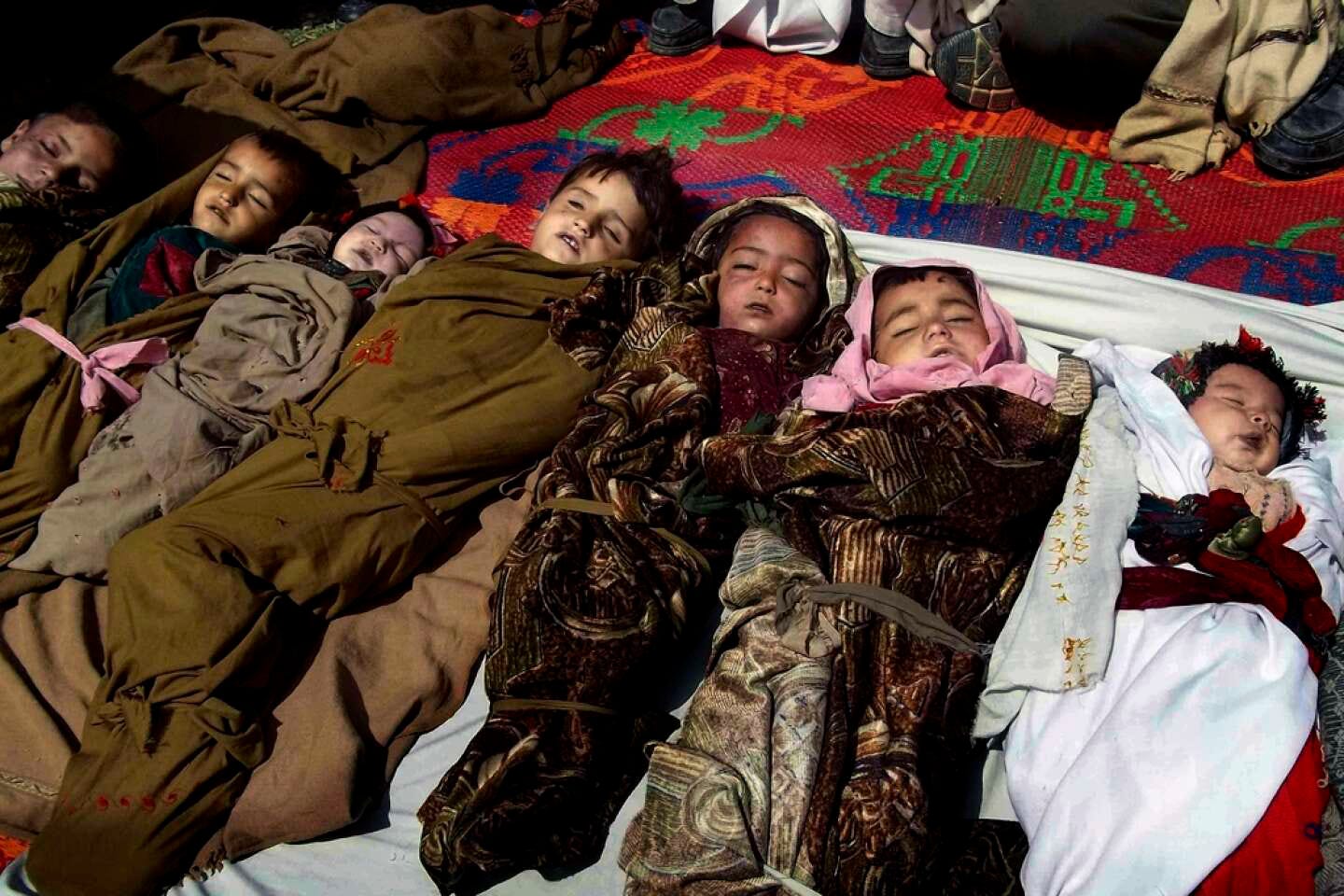
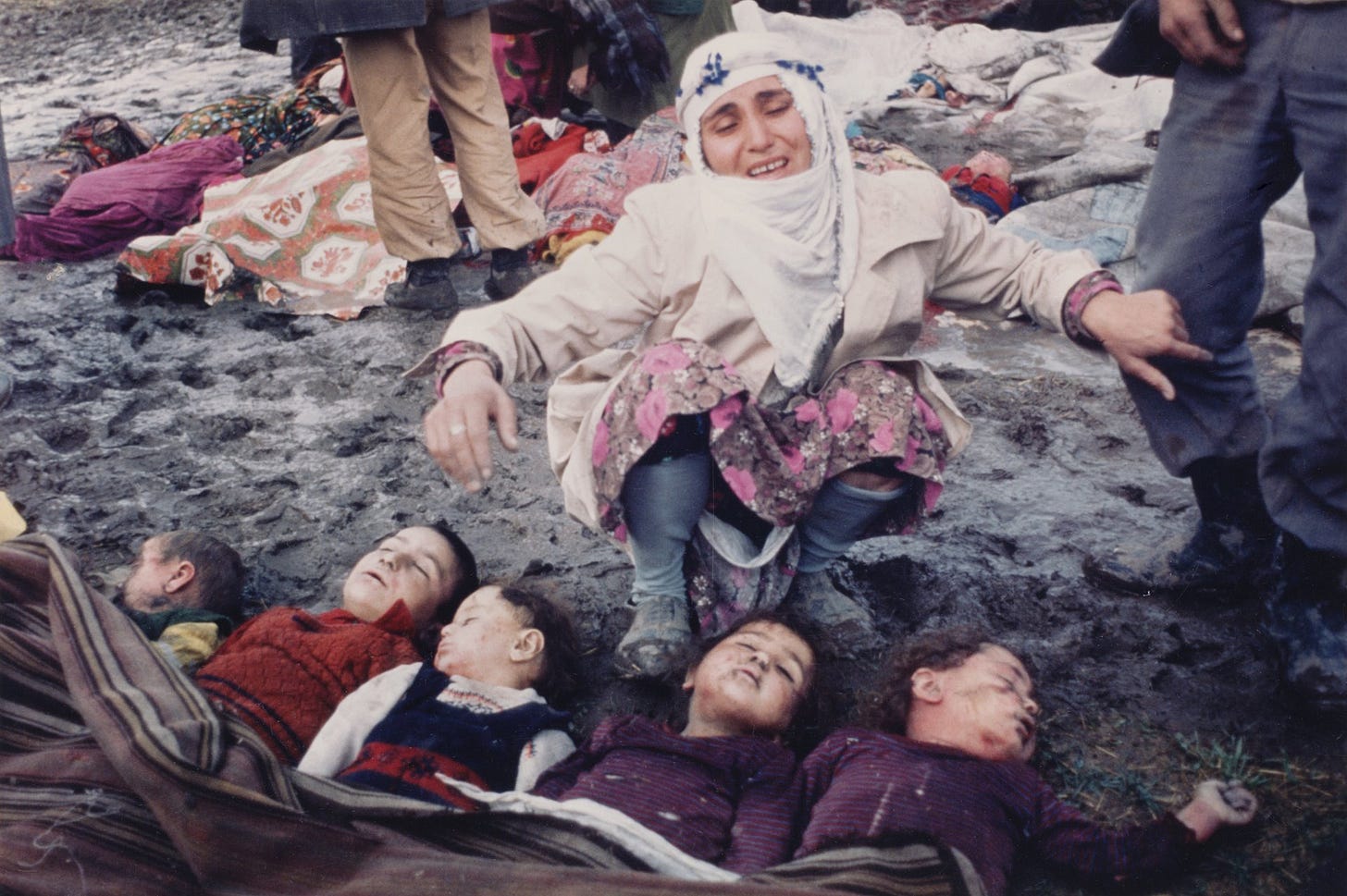


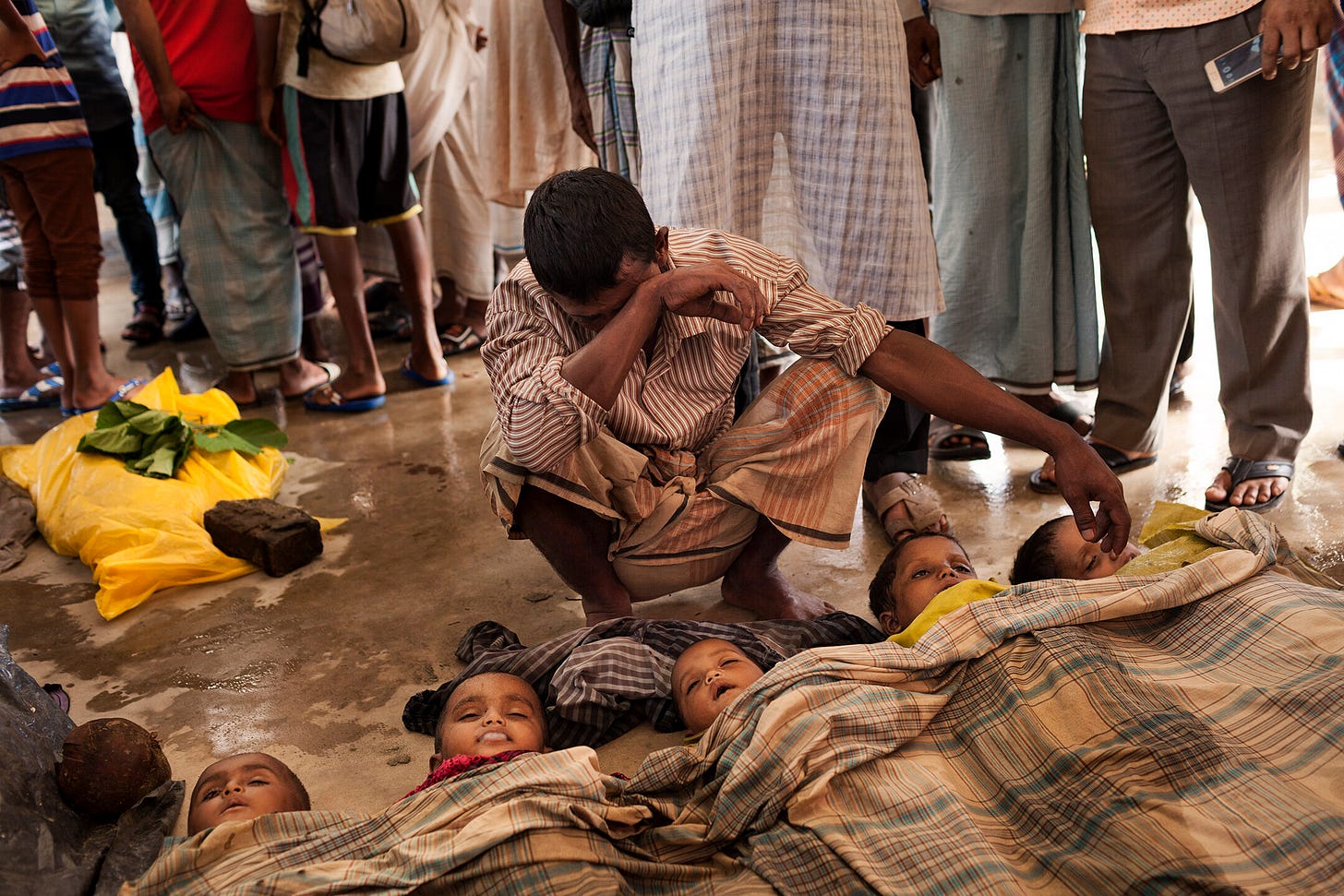
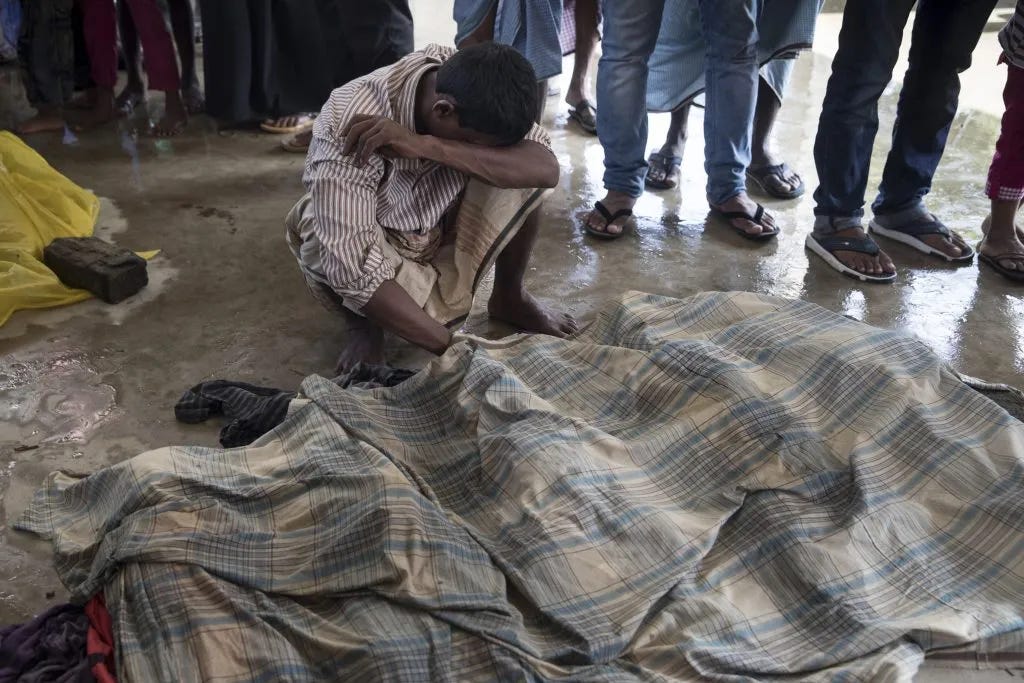
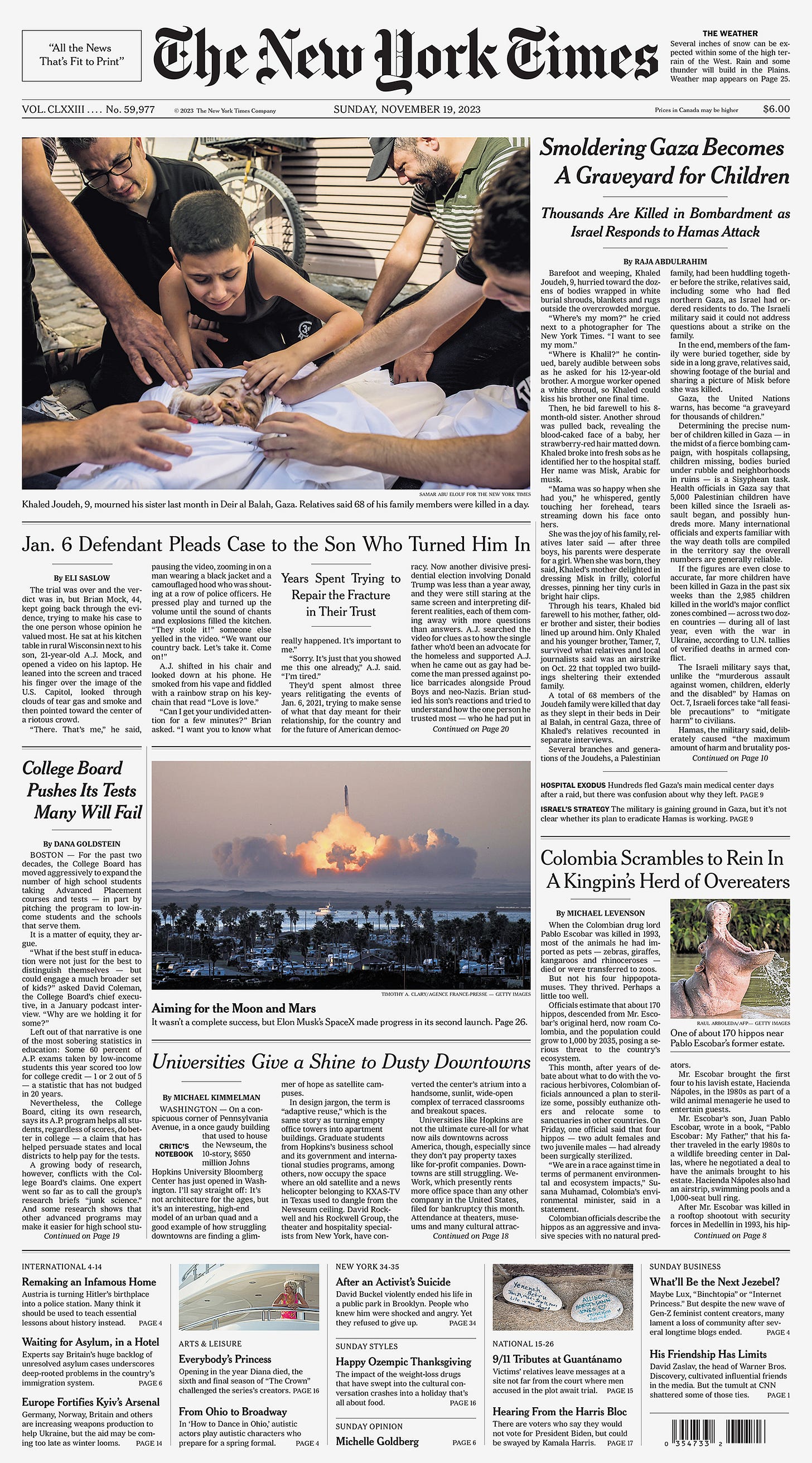

Thank you, Patrick. I'm glad that you referenced Sischy's essay, which I hadn't thought about for a long time. I think that there's more to unpack from that essay, in which she criticized Sebastião Salgado for presenting people as more symbols than people, as piggybacking on the natural empathy of readers but not improving upon that original, human impulse. Hams' photograph has evoked empathy--it is particular in a way that makes me terrified for my own children. In fact, I went downstairs to check on them, asleep, not knowing what else to do to assuage the fear sparked by that very specific nightmare. If, as Sischy writes, such a feeling can "make us actually help," I think that Hams strengthens that possibility.
I think so, also, because that image differs from Salgado's in a very crucial respect--Hams can easily be the next dead photojournalist in Gaza. His witness comes at great risk and he's on to the next assignment. It's not sentimental, nor clinical (as Sischy quotes a being evident in Walker Evan's work), but he cares. That message comes through, loudly.
Thank you for this Patrick. This is a crushing time for many photojournalists. I am always amazed by how they are able to do their jobs - always on the line between documenting and experiencing what they see. And the balance of straddling bearing witness with an art form.
It was difficult reading and looking at this particular FOV - as it should be. The moment we can scroll through these images without pause will be red flag for anyone. Between these staggering images and the ones that have come out of the results of the Hamas attack on Israelis on Oct 7, the savagery coming from both sides is palpable.
I was reminded of how one image of a dead Syrian child from 2015 highlighted the migrant crisis coming out of the Middle East (and yet not so much from Africa) - 2 year old Alan Kurdi brought it hom for most of Canada as he was about to start a new life there - escaping war. (ref: https://www.cbc.ca/news/canada/british-columbia/family-distraught-over-unauthorized-movie-about-alan-kurdi-1.5143575)